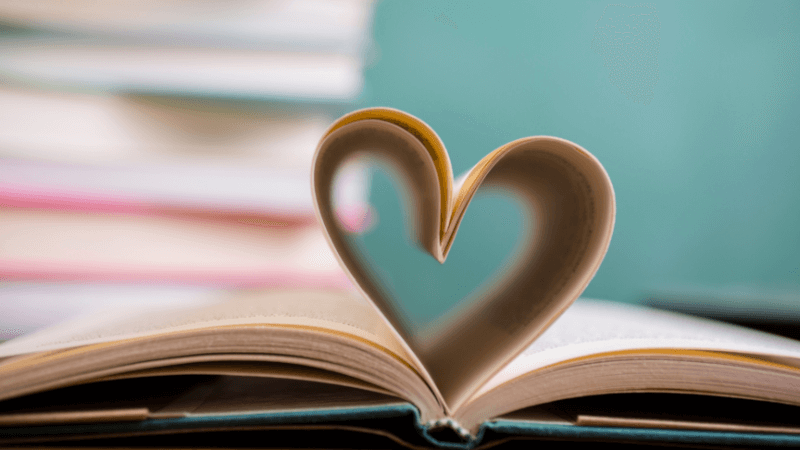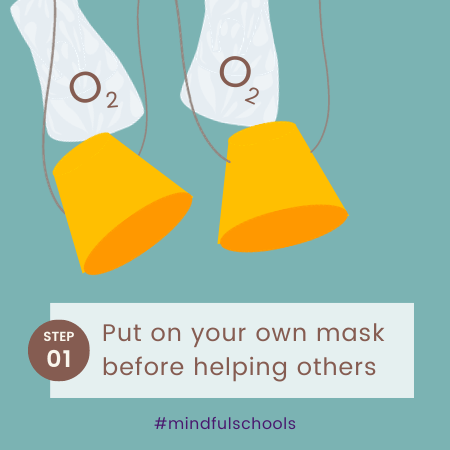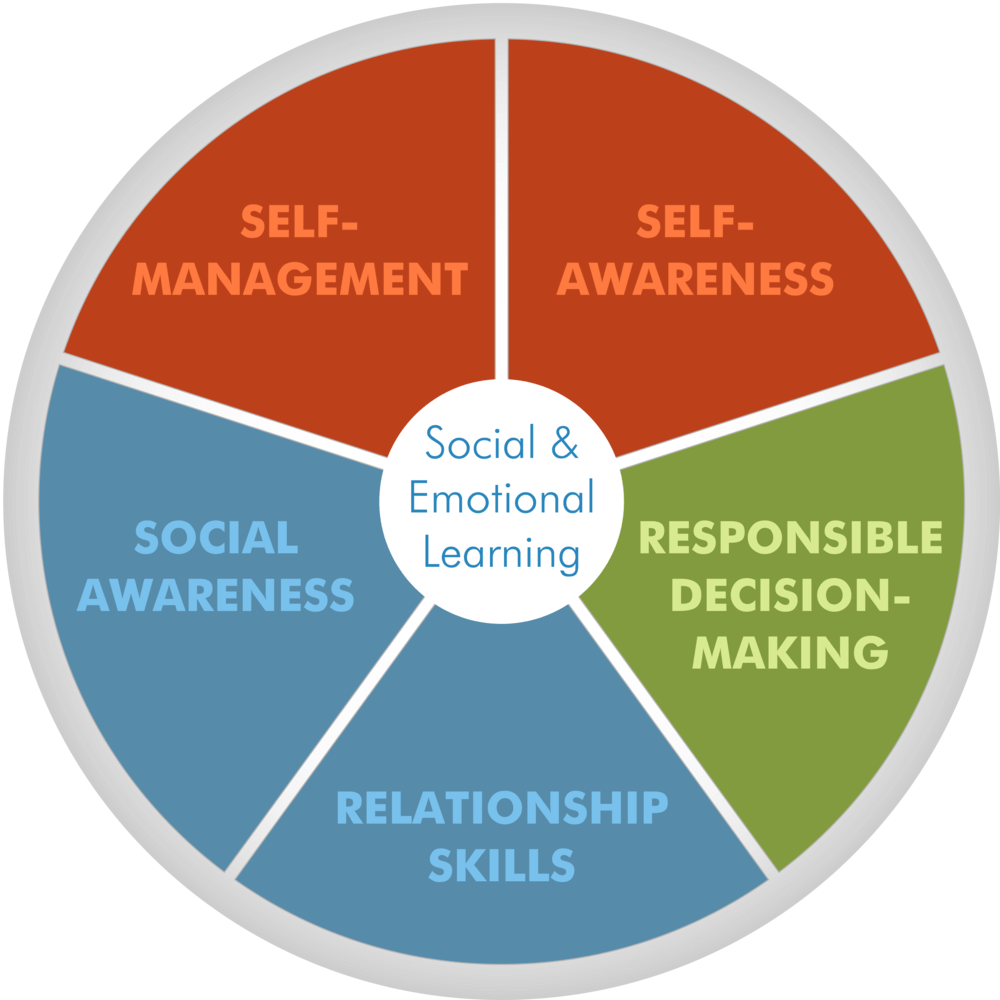As educators, we don’t (and shouldn’t) leave our emotions at the door when we’re working with young people. Attending to our own social and emotional needs is critically important, especially if we’re tasked with teaching SEL to our students.

There is a reason why flight instructions tell us to put on our oxygen masks first before helping others.
We know this. We know that our very human emotions accompany our very human selves when we arrive at school. And yet as we go through our day, it’s easy for our own emotional needs to take a backseat while we’re attending to the needs of our students.
Try 3 exercises below to support both educator and student social emotional learning in the classroom.

Try These 3 Exercises
Take just a few moments to pause and try one or a few of the following exercises:
- Feel your feet on the floor or where your body makes contact with your chair
- Take three deep breaths, or simply bring your attention to how you are breathing
- Stretch your arms above your head, roll your shoulders, or move in a way that feels nourishing for your body
Then, take a moment to notice how you feel. What sensations, thoughts, or emotions are present?
When:
You might try a mindful pause:
- Just before stepping into your classroom
- While waiting at the copier
- During your 5 seconds of “wait time” after asking students a question
- When something happens in your classroom that triggers your frustration
Practicing these strategies during both quiet and challenging moments can be supportive in building and expanding self-awareness and self-management.
What you might notice:
Once you start integrating mindful pauses during your day, you may notice:
- A story you’re telling yourself about a student. Once you’ve brought it to awareness, you may realize that story may not actually be true.
- You’re feeling especially activated by yet another classroom interruption, and that noticing how you’re feeling has already interrupted your immediate (and understandable) impulse to react in frustration or raise your voice.
Why:
We can’t say it enough: Educators, attending to your own social and emotional needs is critically important for your well-being, AND your emotional regulation and SEL skills enhance your teaching of SEL to students. Through observation, mirroring, and modeling, and students are learning to recognize emotions and navigate interactions with care and compassion just by being around you.
Mindfulness doesn’t have to be anything fancy or something we carve out a lot of time to do. See when you can insert a mindful pause during your day or with students at a natural transition. Be gentle with yourself.
What Is Social Emotional Learning?
Social emotional learning is “the process through which all young people and adults acquire and apply the knowledge, skills, and attitudes to develop healthy identities, manage emotions and achieve personal and collective goals, feel and show empathy for others, establish and maintain supportive relationships, and make responsible and caring decisions,” according to CASEL. SEL usually involves instruction from an adult who utilizes a curriculum to help students build skills in recognizing emotions and navigating social interactions with care and compassion.
What Is Social Emotional Learning for Educators?
As adults, we also need strategies to use during the school day to navigate challenging classroom moments, support our well-being, and nurture our own social emotional competencies.
Mindfulness and SEL

Mindfulness is a powerful foundation for and complement to developing SEL skills. Taking a mindful pause, for example, is a simple way you can resource yourself and tend to your own emotional needs during the school day. It can help with two of the core SEL competencies taught to students:
- Self-Awareness – the ability to recognize thoughts and feelings in the moment and
- Self-Management – the ability to navigate and respond to those thoughts and feelings in an appropriate way.
Educators, Explore Mindfulness in our 101 Course
In 101: Mindfulness Foundations, learn practices that can resource you during the school day and daily life, with trauma-sensitive approaches for navigating emotons, working with thoughts and biases, and cultivating compassion and joy. Educators earn credits.
Bring Mindfulness to Your Classroom
In 201: Mindfulness in the Classroom, learn trauma-sensitive strategies to nurture social and emotional well-being in your classroom. Access the Mindful Schools K-12 Curriculum and Teaching Kit. Educators earn credits.

UPCOMING WORKSHOP:
Mindful Games for your Classroom
Wednesday, April 24, 2024 at 4pm ET
Join us for this dynamic 90-minute training to experience mindfulness through play to evoke curiosity, spark creativity, foster engagement, and support learning.


